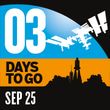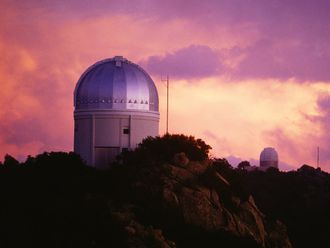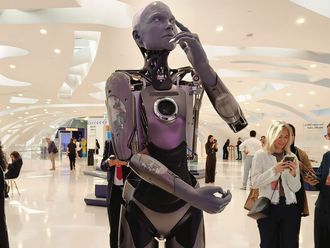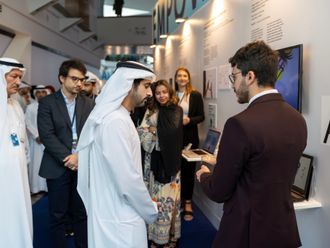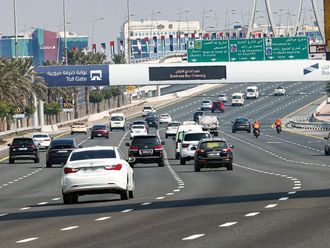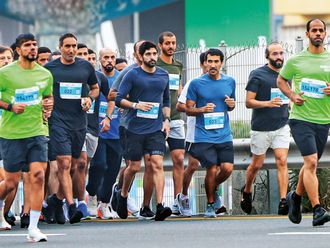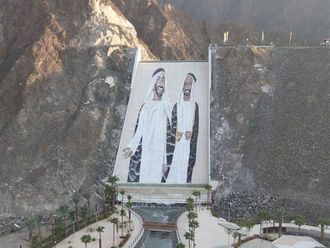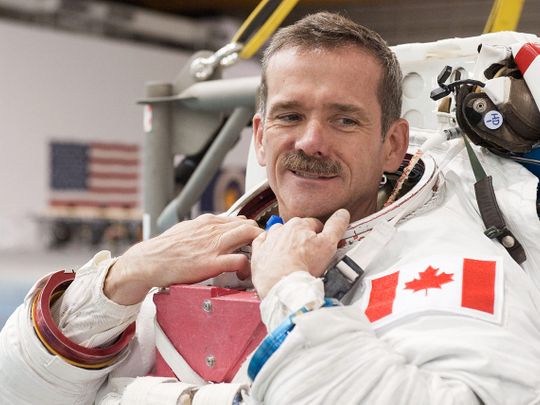
This exclusive story is the eighth report in a 10-day countdown for the launch of UAE’s first man in space.
Dubai: The first Emirati astronaut’s space expedition to the International Space Station (ISS) on September 25 will have a global impact on millions of Arabs, said Canadian commander, astronaut and icon Chris Hadfield.
In a special message for Hazza Al Mansoori before his historic trip to the ISS, Hadfield shared his excitement to see Hazza in space as the first Emirati to represent his people.
“Hi, this is Commander Chris Hadfield, astronaut and someone who’s really excited to see Hazza Al Mansoori flying to space,” Hadfield said in a video for Hazza sent to Gulf News.
Hadfield became the first Canadian commander of the ISS in 2013.
He spent a total of 166 days in space from his first space flight in November 1995 until retiring in 2013. During this time, he became the first Canadian to stay on the Russian Space Station Mir, the ISS’ predecessor.
Hadfield is also the first Canadian to perform spacewalks also known as Extravehicular Activity. He spent a total of 14 hours, 53 minutes and 38 seconds floating in space outside the ISS.
It was during one of these spacewalks while setting up Canadarm2, Canada’s robotic arm on the ISS, when he went temporarily blind in both eyes in the vastness of space.
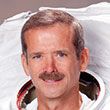
Hazza, it is so important what you’re doing … the real big impact is global. You represent the hopes and dreams of millions of Arabic-speaking people as well as children all around the world.
Known as the “mustachioed” Canadian astronaut, Hadfield won the hearts of millions and became a global sensation for his famous cover of David Bowie’s “Space Oddity”, which Nasa says is the first music video made in space. His humility and charm are much loved by the international community.
Inspiring youth
Though now retired, Hadfield continues to work tirelessly to inspire the youth to do what they love, even more so if it’s anything related to space — his first love. And this is what Hazza’s trip will do as well, Hadfield said.
“Hazza, it is so important what you’re doing not just personally for you, not just professionally in your own career, but the real big impact is global. You represent the hopes and dreams of millions of Arabic-speaking people as well as children all around the world,” Hadfield said.
“You’re a role model for those people to make different choices with their lives. That’s what’s so important about international cooperation — allowing people to see an opportunity they didn’t know existed for them.”
“It was hugely influential for me as a kid to see the first people flying in space to go to the Moon. And it changed my decision-making. And you’re doing that exact same thing.”
Influenced by moon landing
Coincidentally, Hadfield and Hazza were both inspired to become astronauts at a young age by Nasa astronauts who landed on the Moon. Hadfield’s childhood hero was Neil Armstrong, the first man on the moon. It was in 1969 at a tender age of nine when the young boy from Ontario decided to follow Armstrong’s footsteps after seeing the footage of the first moon landing.
For his part, Hazza’s biggest influence to becoming an astronaut were the Apollo 17 astronauts, the last men on the moon, when they visited the UAE in 1976 on the invitation of Shaikh Zayed Bin Sultan Al Nahyan. The photograph of the visit became an inspiration to young Hazza later on.
Both Hadfield and Hazza also served their countries’ armed forces as military pilots before venturing into the space industry.
Hadfield became interested in flying at a young age, winning a glider pilot scholarship at age 15 and a powered pilot scholarship at age 16. Throughout his illustrious career, Hadfield flew over 70 different types of aircraft.
Hazza, meanwhile, is considered as one of the most outstanding military pilots in his ranks and became the youngest pilot qualified to fly an F-16 in the UAE.
Hadfield was 35 years old during his first trip to space, the same age as Hazza now for his inaugural space flight.
Three tips
Before ending this message, Hadfield shared his top three tips with Hazza:
1. Be good at your job. Do the work. Be competent. You have to focus and do every single thing as well as any human being can do. You got a background to do all those things. You’re working like crazy and I know. But you have to do that. That’s number one. Your job is to be the best astronaut that’s ever flown in space.
2. Be a good crew member. Support the team members from the all the other countries and organisations, all the people supporting you on the ground. Build a team of people that can cooperatively together do something that nobody else can do, and you’re sort of at the end of the spear for that.”
3. Share the experience with the world. Don’t keep any of it to yourself. Share it now in advance. Share it on the day of launch. Think about how you can let other people in on what’s going through your own mind. What does it feel like? And during the flight, seek every opportunity to not just squander it and make it your own but to let other people in on the magic of this brand new human experience. And then of course afterwards, your legacy will live for decades right across the UAE, across the Arab world and across the whole planet.”
He also reminded Hazza to have fun on this historic journey.
“You’re changing your own life. You’re changing, to some degree, the future of human capability … Have a great voyage! I look forward to talking to you maybe while you’re in space but definitely when you land back on Earth. Bon voyage!”


